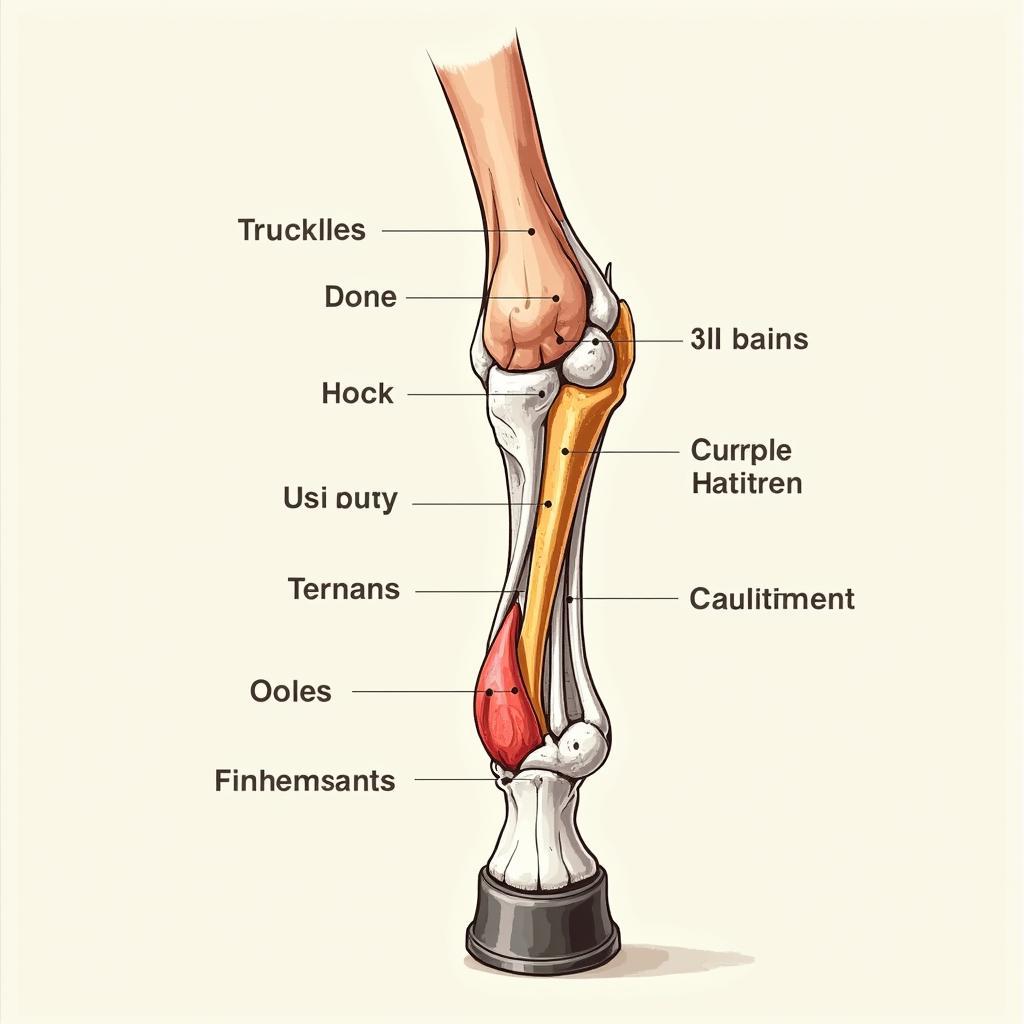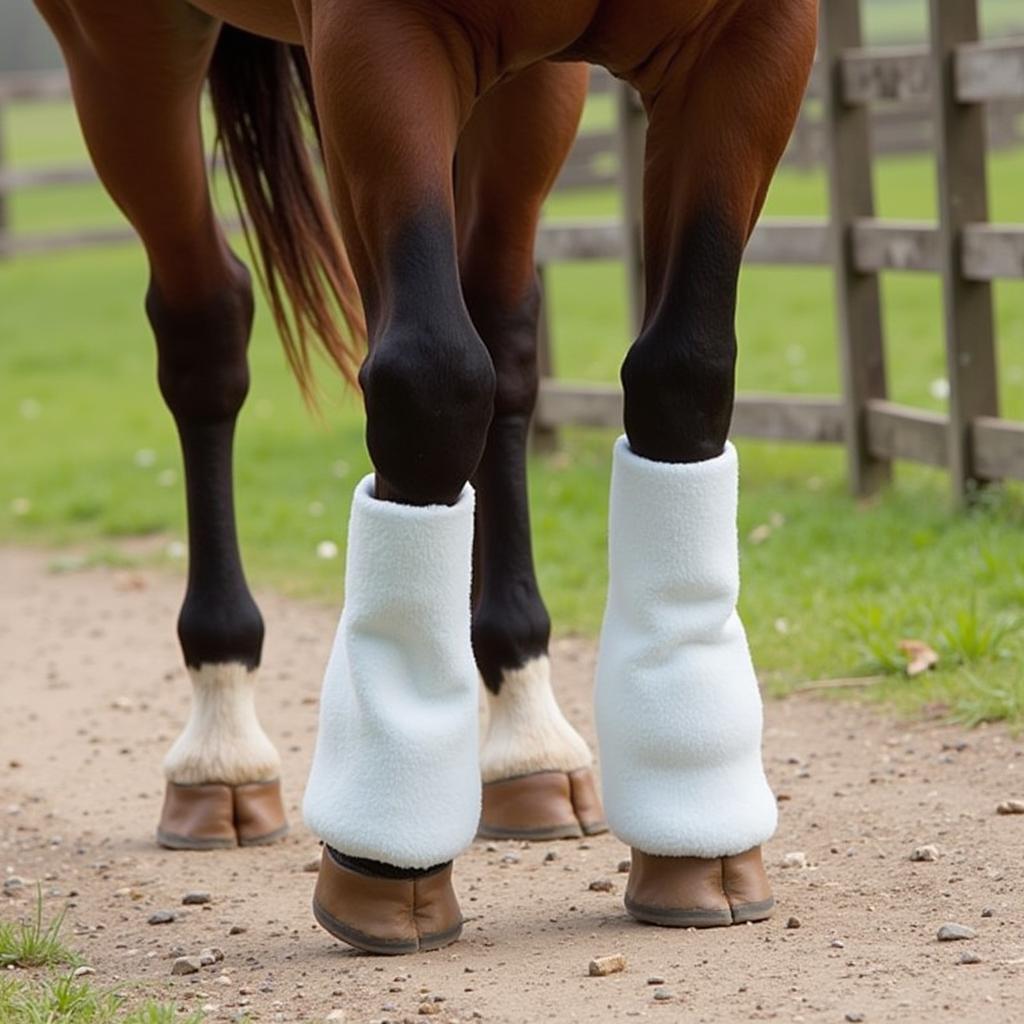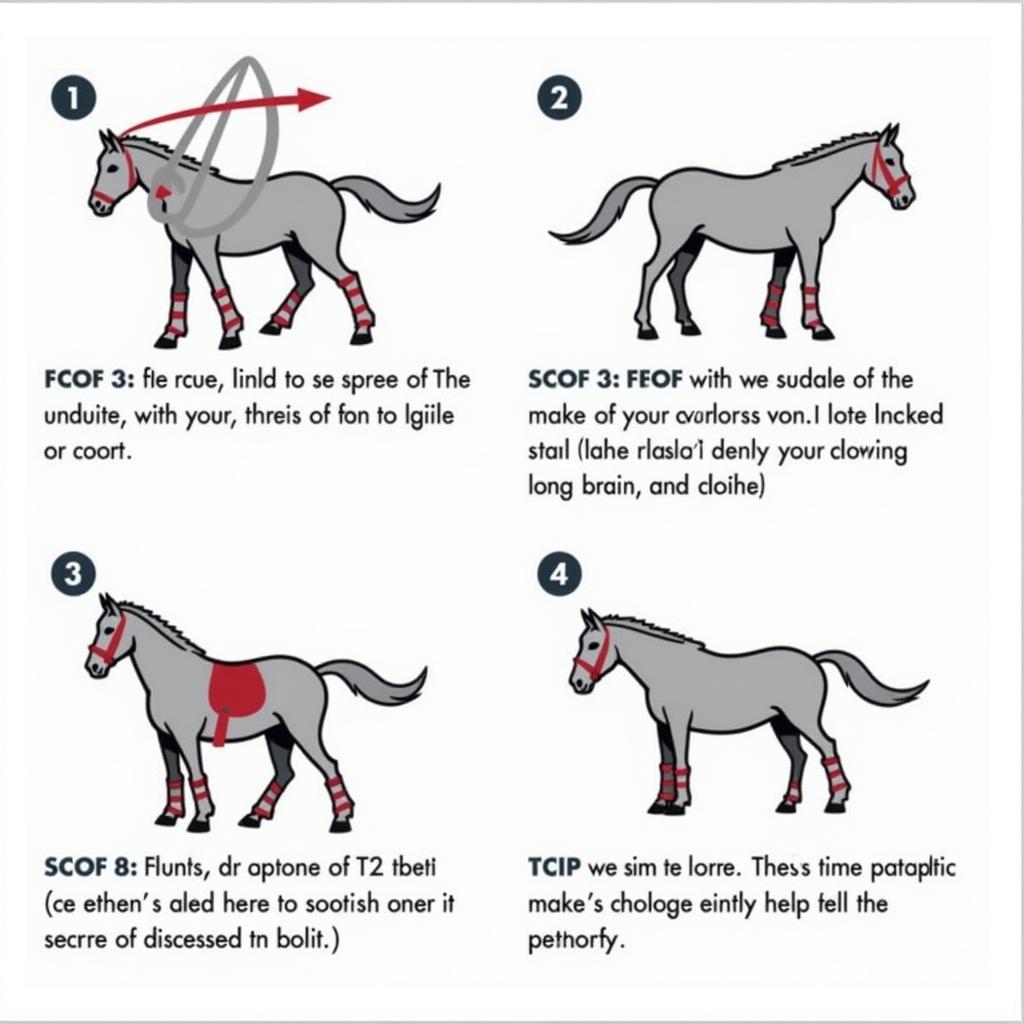Ice hock boots are a common sight in many barns, favored for their ability to provide targeted cold therapy to a horse’s hocks. But what exactly are they, and when should you consider using them on your equine partner? This comprehensive guide will delve into the world of Ice Hock Boots For Horses, providing you with the knowledge to make informed decisions about your horse’s health.
Understanding Hock Pain in Horses
Before diving into the specifics of ice hock boots, it’s essential to understand why a horse might need them in the first place. The hock joint, similar to a human ankle, is a complex structure that endures significant stress, especially in athletic disciplines.
 Horse Hock Anatomy
Horse Hock Anatomy
Several factors can contribute to hock pain in horses, including:
- Arthritis: This degenerative joint disease is prevalent in older horses and can cause inflammation and pain in the hock joint.
- Bog Spavin: A fluid buildup in the hock joint, often caused by inflammation or trauma, leading to a soft, puffy swelling.
- Bone Spavin: A more serious condition involving bony growths within the hock joint, resulting in stiffness and pain.
- Capped Hock: An inflamed swelling at the point of the hock, usually caused by trauma like a kick or stall injury.
- Curb: An injury to the ligaments or tendons running along the back of the hock, often associated with strain or overextension.
Recognizing the signs of hock pain is crucial for early intervention. Look out for:
- Lameness or stiffness, particularly after rest
- Swelling or heat in the hock area
- Reluctance to bend the hock, difficulty backing up
- Pointing a hind leg forward at rest
If you suspect hock pain, consulting your veterinarian is vital to diagnose the underlying cause and develop a tailored treatment plan.
The Benefits of Ice Hock Boots for Horses
 Ice Hock Boots in Action
Ice Hock Boots in Action
Ice hock boots are designed to provide targeted cold therapy to the horse’s hock area. This therapy works by constricting blood vessels, reducing inflammation and swelling. The cold also helps to numb nerve endings, providing a temporary analgesic effect.
Here’s why ice hock boots are beneficial:
- Reduce Inflammation: By constricting blood vessels, they minimize the flow of inflammatory substances to the injury site.
- Alleviate Pain: Cold therapy helps numb nerve endings, providing a natural pain relief mechanism.
- Promote Healing: Reducing inflammation and pain creates an optimal environment for tissue repair.
- Prevent Further Injury: By reducing swelling and pain, ice hock boots can help prevent further stress on the injured area.
Types of Ice Hock Boots
Ice hock boots come in various forms, each offering unique advantages:
- Gel Ice Packs: These are the most common type. They are affordable, easy to use, and mold well to the horse’s leg.
- Clay-Based Packs: These packs retain cold for longer periods, making them suitable for extended cold therapy sessions.
- Electric Ice Boots: These offer consistent cold therapy through electrical cooling mechanisms, eliminating the need for ice or freezing.
The best type of ice hock boot for your horse will depend on the severity of their condition, your budget, and your personal preferences.
When to Use Ice Hock Boots
Ice hock boots are most effective when used for:
- Post-Exercise Recovery: Applying them after strenuous workouts can help minimize inflammation and soreness.
- Acute Injuries: In cases of sudden injuries like kicks or strains, ice hock boots can help control swelling and pain.
- Chronic Conditions: For horses with arthritis or other degenerative joint diseases, regular cold therapy can help manage pain and inflammation.
It’s essential to remember that ice hock boots are not a cure-all. They are most effective when used as part of a comprehensive treatment plan that may include other therapies like veterinary care, medication, and rehabilitation exercises.
How to Use Ice Hock Boots Safely and Effectively
 Proper Application of Ice Hock Boots
Proper Application of Ice Hock Boots
To reap the full benefits of ice hock boots, it’s crucial to use them correctly:
- Prepare the Boots: Ensure the ice packs are adequately chilled.
- Position the Boots: Place the boots on the horse’s hocks, ensuring they are snug but not overly tight.
- Secure the Straps: Fasten the straps securely, making sure they are evenly tightened to avoid pressure points.
- Monitor the Horse: Stay with your horse while the boots are on, observing for any signs of discomfort or irritation.
- Remove the Boots: Remove the boots after the recommended duration, typically 15-20 minutes.
Important Considerations:
- Always consult your veterinarian before using ice hock boots on your horse.
- Never apply ice directly to the skin; always use a barrier like a thin towel or boot liner.
- Avoid using ice hock boots on open wounds or areas with compromised skin integrity.
- Over-icing can damage skin and tissues. Always follow the recommended time guidelines.
Choosing the Right Ice Hock Boots
With a myriad of ice hock boots available, selecting the right one can feel overwhelming. Consider these factors:
- Size and Fit: The boots should fit snugly without restricting circulation. Measure your horse’s hocks carefully and consult the manufacturer’s sizing chart.
- Material: Look for boots made from durable, easy-to-clean materials. Neoprene and nylon are popular choices.
- Cooling Mechanism: Decide on the type of cooling mechanism that best suits your needs and preferences.
- Ease of Use: Opt for boots that are simple to apply, remove, and clean.
Testimonials
“As a competitive show jumper, I always have ice hock boots on hand. They’ve been a lifesaver for managing my horse’s hock soreness after intense competitions.” – Sarah M., Professional Rider
“My older gelding suffers from arthritis, and ice hock boots have made a noticeable difference in his comfort and mobility. I use them regularly as part of his management plan.” – John L., Horse Owner
Conclusion
Ice hock boots can be a valuable tool for managing hock pain and inflammation in horses. Understanding the different types, benefits, and proper usage guidelines can help you make informed decisions to support your equine companion’s health and well-being. Remember, early intervention and a proactive approach to your horse’s health are crucial. If you suspect your horse is experiencing hock pain, always consult your veterinarian for diagnosis and a tailored treatment plan.
For further information on horse care and equipment, explore our website or contact our team at 0772127271, email us at [email protected], or visit us at QGM2+WX2, Vị Trung, Vị Thuỷ, Hậu Giang, Việt Nam. We are available 24/7 to assist you.